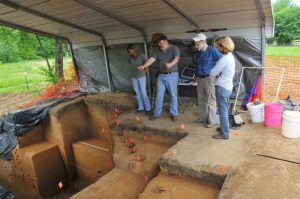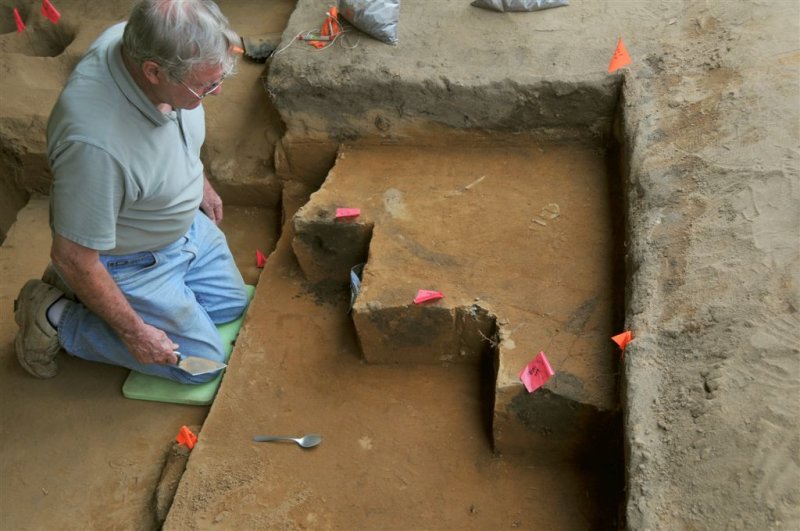 The Conservancy’s first site in South Carolina contains one of the oldest known features in the state.
The Conservancy’s first site in South Carolina contains one of the oldest known features in the state.
Foxwood Farms, which sits in the shadow of the Blue Ridge Mountains in northwest South Carolina, is a premiere facility for hunter jumper horse training, as well as horse showing, breeding, and sales, that’s owned and managed by Michael and Jodi Robertson. In one of the fenced paddocks, looking a little out of place, is a metal carport. Beneath the carport are several very deep excavation units, which are part of the investigation of the site.
Several years ago, while pulling up a tree stump, Michael’s brother, Jesse, found a piece of 4,500-year-old fiber-tempered pottery. The discovery, which is unusual for this area, led to the investigation by Terry Ferguson, an archaeologist at nearby Wofford College. Ferguson is leading a team of archaeologists with the South Carolina Institute of Archaeology and Anthropology in Columbia, as well as scores of volunteers, who are excavating the site.
To date, dozens of features and artifacts have been recovered beneath and outside of the metal shelter, while the Robertsons continue to raise and train horses, and their clients practice jumps nearby. The data suggests near continuous occupation of the site from approximately 9000 BC to AD 1500.
One of the most interesting finds is a Late Woodland/Mississippian period (ca. a.d. 1350) palisade that surrounded the village. Another remarkable discovery is 20 flat stones that were found covering a shallow pit at the 10,000 year-old level. The arrangement of the stones, which resembles a tabletop, suggests humans placed them there, though it’s not clear what their purpose was. What is clear is that it’s one of the oldest known features in the state.
What’s also clear is that the site is one of the most significant sites in the state. Tommy Charles, who retired from the South Carolina Institute of Archaeology and Anthropology, said it is especially important to clarifying the poorly understood archaeological chronology of this region of the state, which is known as the Piedmont.
To ensure that research can continue, the Robertsons have agreed to sell the Conservancy approximately nine acres containing the site. The Conservancy, in turn, will make sure the excavations continue to have no adverse impact on the Robertsons’ horse farming operation. This is the first of what the Conservancy hopes will be many acquisitions in South Carolina




